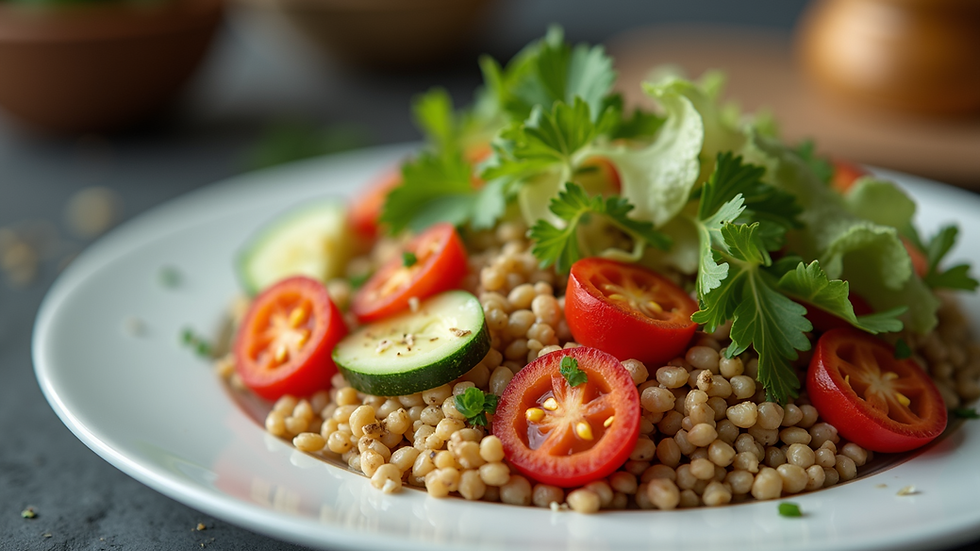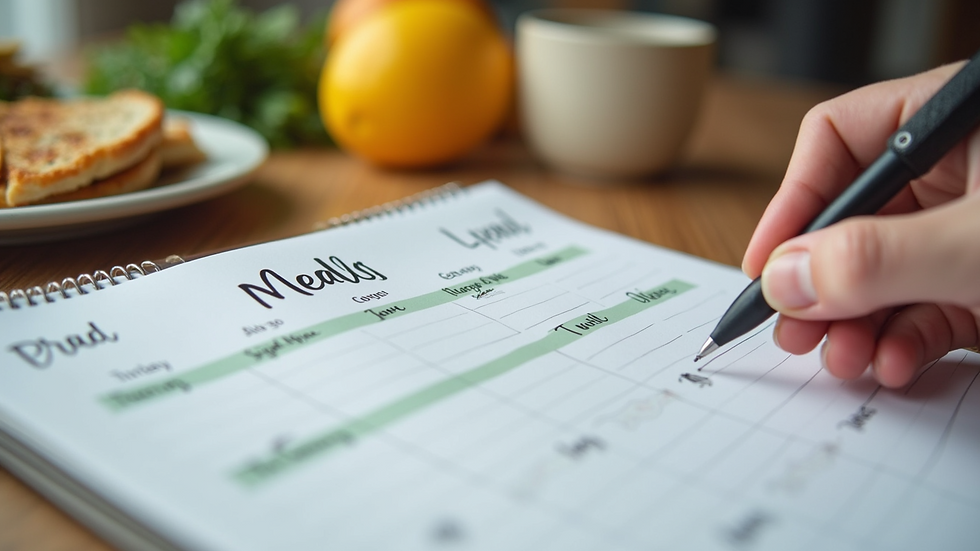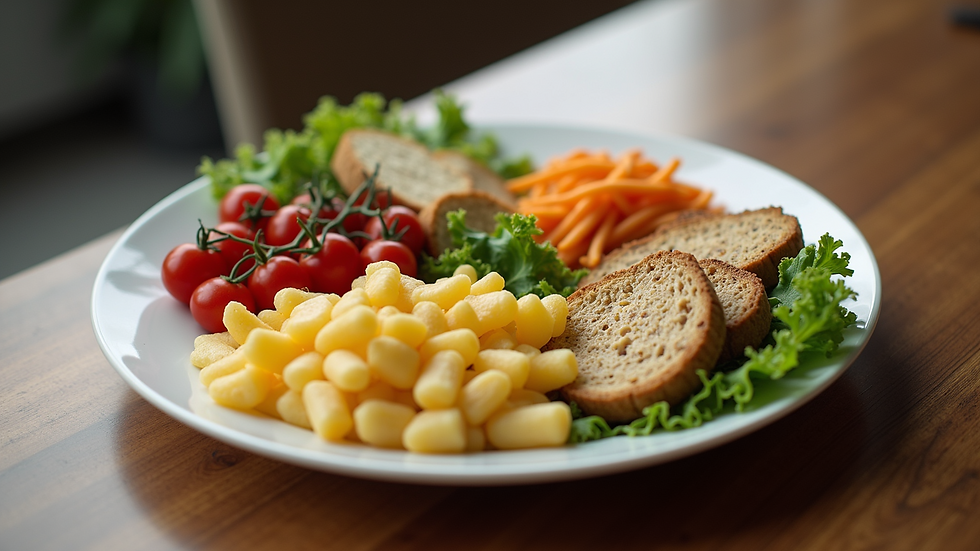How to Create a Balanced Diet That Fits Your Lifestyle
- Ivona Tarnaj

- Jul 28
- 3 min read
Eating well is essential for maintaining good health and energy throughout the day. However, creating a balanced diet that fits your lifestyle can sometimes feel overwhelming. With so many food choices and diet trends, it’s important to focus on what works best for your body and daily routine. This guide will help you understand the basics of a balanced diet and provide practical tips to tailor it to your unique needs.
Understanding the Basics of a Balanced Diet
A balanced diet means eating the right amounts of different types of foods to get the nutrients your body needs. These nutrients include carbohydrates, proteins, fats, vitamins, and minerals. Each plays a vital role in keeping your body functioning well.
Carbohydrates provide energy.
Proteins help build and repair tissues.
Fats support cell growth and protect organs.
Vitamins and minerals keep your immune system strong and support overall health.
To create a balanced diet, aim to include a variety of foods from all food groups every day. This includes fruits, vegetables, whole grains, lean proteins, and healthy fats. Drinking plenty of water is also important to stay hydrated.

How to Build a Balanced Diet That Fits Your Lifestyle
Everyone’s lifestyle is different, so your diet should reflect your personal needs, preferences, and schedule. Here are some steps to help you build a balanced diet that works for you:
Assess Your Current Eating Habits
Keep a food diary for a few days to see what you usually eat. This will help you identify areas where you can improve.
Set Realistic Goals
Whether you want to lose weight, gain muscle, or simply eat healthier, set achievable goals that fit your lifestyle.
Plan Your Meals
Planning meals ahead of time can save you from unhealthy choices when you’re busy or tired. Consider preparing meals in batches or using custom meal plans tailored to your preferences.
Include Variety
Eating a wide range of foods ensures you get all necessary nutrients and keeps meals interesting.
Listen to Your Body
Pay attention to hunger and fullness cues. Eat when you’re hungry and stop when you’re satisfied.
Stay Flexible
Life can be unpredictable. Allow yourself some flexibility to enjoy treats or eat out without guilt.

What is the 40-40-20 Rule Diet?
The 40-40-20 rule is a simple guideline for balancing macronutrients in your diet. It suggests that your daily calorie intake should come from:
40% carbohydrates
40% protein
20% fat
This ratio aims to provide enough energy and support muscle maintenance while keeping fat intake moderate. It can be especially useful for people who are active or looking to improve body composition.
To follow this rule, focus on:
Choosing complex carbohydrates like whole grains, fruits, and vegetables.
Including lean protein sources such as chicken, fish, beans, and tofu.
Selecting healthy fats from nuts, seeds, avocados, and olive oil.
Tracking your meals with apps or food journals can help you stay within these percentages. However, remember that individual needs may vary, so adjust the ratio based on how your body responds.

Tips for Maintaining a Balanced Diet on a Busy Schedule
Busy lifestyles can make it challenging to eat well consistently. Here are some practical tips to help you maintain a balanced diet even when time is limited:
Prep Ingredients in Advance
Wash and chop vegetables, cook grains, and portion out snacks ahead of time.
Choose Quick and Nutritious Meals
Opt for meals that take less than 30 minutes to prepare, like stir-fries, salads, or smoothies.
Keep Healthy Snacks Handy
Nuts, yogurt, fruit, and whole-grain crackers are great options to keep you energized between meals.
Stay Hydrated
Carry a water bottle and drink regularly throughout the day.
Limit Processed Foods
Try to avoid fast food and packaged snacks that are high in sugar, salt, and unhealthy fats.
Use Technology
Meal planning apps and reminders can help you stay on track.
By incorporating these habits, you can enjoy a balanced diet without sacrificing convenience.
Making Your Balanced Diet Sustainable and Enjoyable
The key to a successful balanced diet is sustainability. It should be something you can maintain long-term without feeling deprived or stressed. Here are some ways to make your diet enjoyable and sustainable:
Experiment with New Recipes
Trying new foods and cooking methods keeps meals exciting.
Eat Mindfully
Slow down and savor your food to improve digestion and satisfaction.
Include Your Favorite Foods
Allow yourself occasional treats to avoid feelings of restriction.
Seek Support
Share your goals with friends or join communities focused on healthy eating.
Adjust as Needed
Your needs may change over time, so be open to modifying your diet.
By focusing on balance, variety, and enjoyment, you can create a diet that supports your health and fits seamlessly into your lifestyle.



Comments